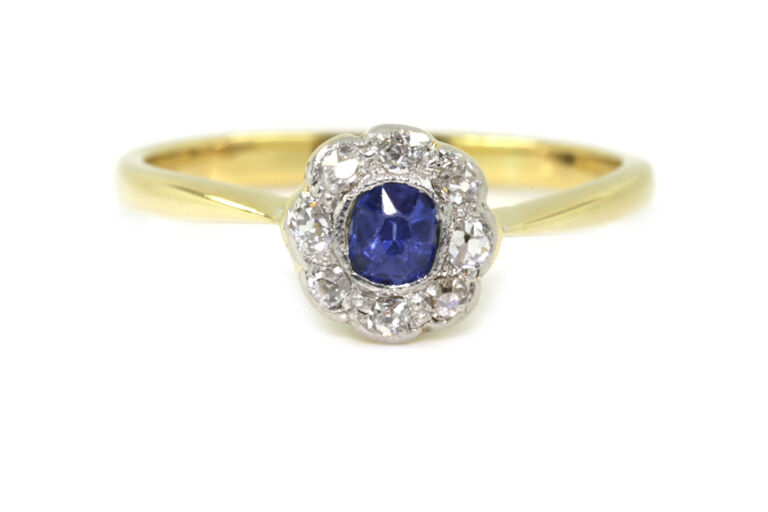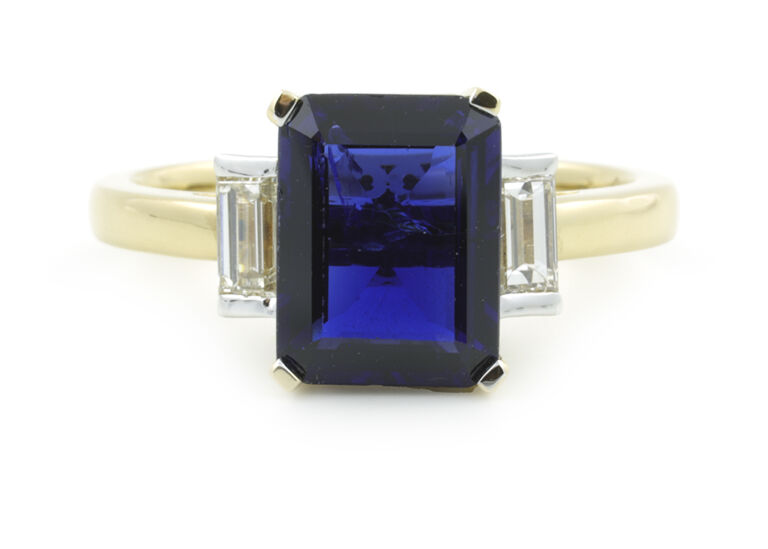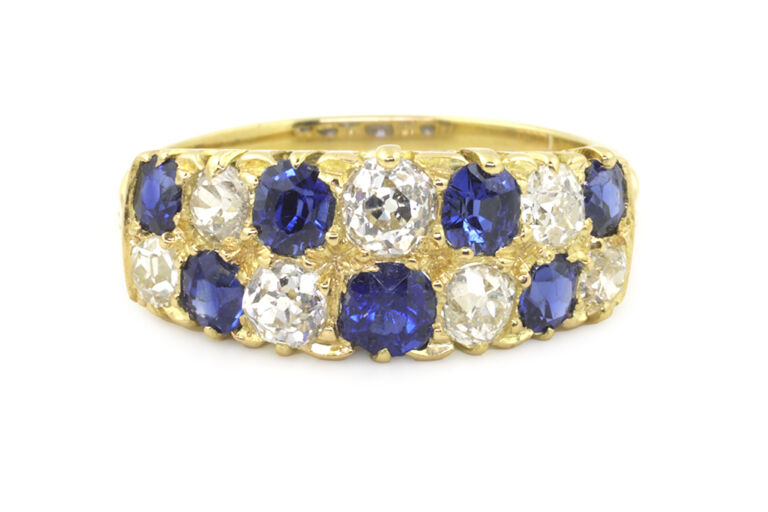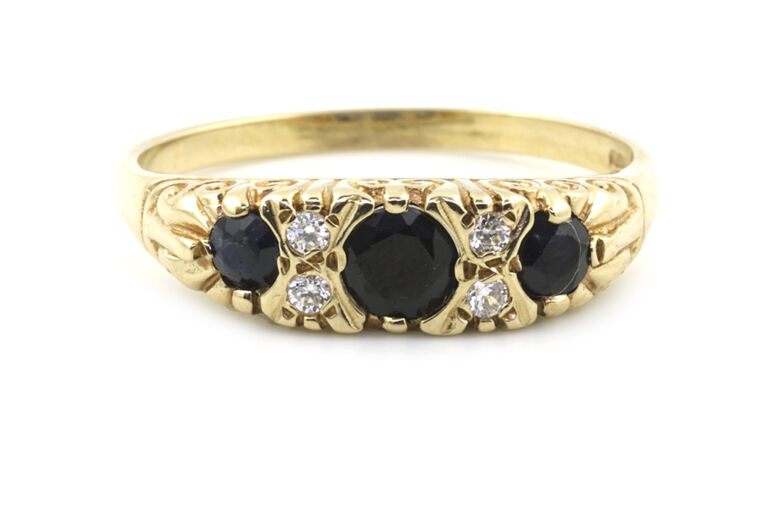

£425.00
Reference: LC-SAP-149
An early twentieth ring composed of an oval blue sapphire in a platinum-coloured millegrain setting, surrounded by antique diamonds similarly set over a pierced undersetting and joined with a plain polished shank.
Assessment of the Coloured Gemstone.
Species: corundum.
Variety: sapphire.
Measuring: 3.75mm x 3.30mm x 2.46mm.
Weight: 0.39ct (calculated).
Shape: oval.
Facet design: ‘star cut’ (a two-tier brilliant-cut, eighteenth early nineteenth century).
Comment(s): moderate abrasion to facet edges.
Assessment of the Diamonds (eight).
Averages stated where applicable.
Shape (various): antique round and cushion.
Facet designs (various): mixed antique cutting styles.
Measuring: 1.85mm.
Weight (total): 0.18ct (estimate).
Details of the Setting.
Measuring: 7.60mm x 7.70mm x 3.90mm.
Stone setting: scolloped with millegrain.
Undersetting: open with swaged divisions.
Shoulders: knife edge.
Shank: ‘D’ profile (heavy).
Unhallmarked: tested and valued as 18ct gold.
Inscribed: “18CT”.
Construction: handmade.
Weight: 2.20g.
Condition: good.
Comments.
It is not uncommon to find small diamonds as old as the seventeenth century still in their original form in early twentieth-century jewellery. This means that these diamonds would have been antique examples at the time the current mount was made. The reason is explained by the fact that diamonds, being costly gems, would have merited their reuse throughout history. The owner, looking to update their jewellery at the caprice of fashion, would have instructed their goldsmith to melt down the original settings and make new ones using as many of the original diamonds as possible. During this process, the larger diamonds would have similarly been treated; re-cut into more popular facet designs optimised for appearance. In the early eighteenth century, such an operation was not costly as a rare surviving document attest¹.
Furthermore, until the early twentieth century small lots of mixed diamonds would have been sold to jewellers who selected the stone they wanted² and would have made settings around those stones available.
These facts meant that diamonds of 0.01 to 0.05ct would have been too small to be economically viable to re-cut. Secondly, provided they were already multifaceted in some way, once they were set in ensemble they would have satisfied the prevailing fashion for a dispersive refective effect.
After the mid-twentieth century, the diamond trade became sufficiently organised to produce and market sets of uniform complimentary diamonds that were matched in facet design, quality and size. This in part came from advances in technology and from the large manufacturers who needed consistency in their mass-produced jewellery that was popular in the emerging affluent markets.
Literature.
¹.Diamonds: An Early History of the King of Gems, Jack Ogden, 2018.
².‘Diamond Cuts in Historic Jewellery, 1381-1910’, Herbert Tillander, 1994.

Blue sapphire: Certified, Emerald-cut, Natural sapphire, 2.79cts weight. Total diamond weight: 0.35cts. 18ct yellow & white gold.

Total sapphire weight approximately 1.40cts. Total diamond weight approximately 0.80cts. 18ct yellow gold. C: 1880-1890.

9ct yellow gold.
We are happy to reserve this item for your viewing in our Wells store. Please leave us your details and availability below and let us handle the rest.